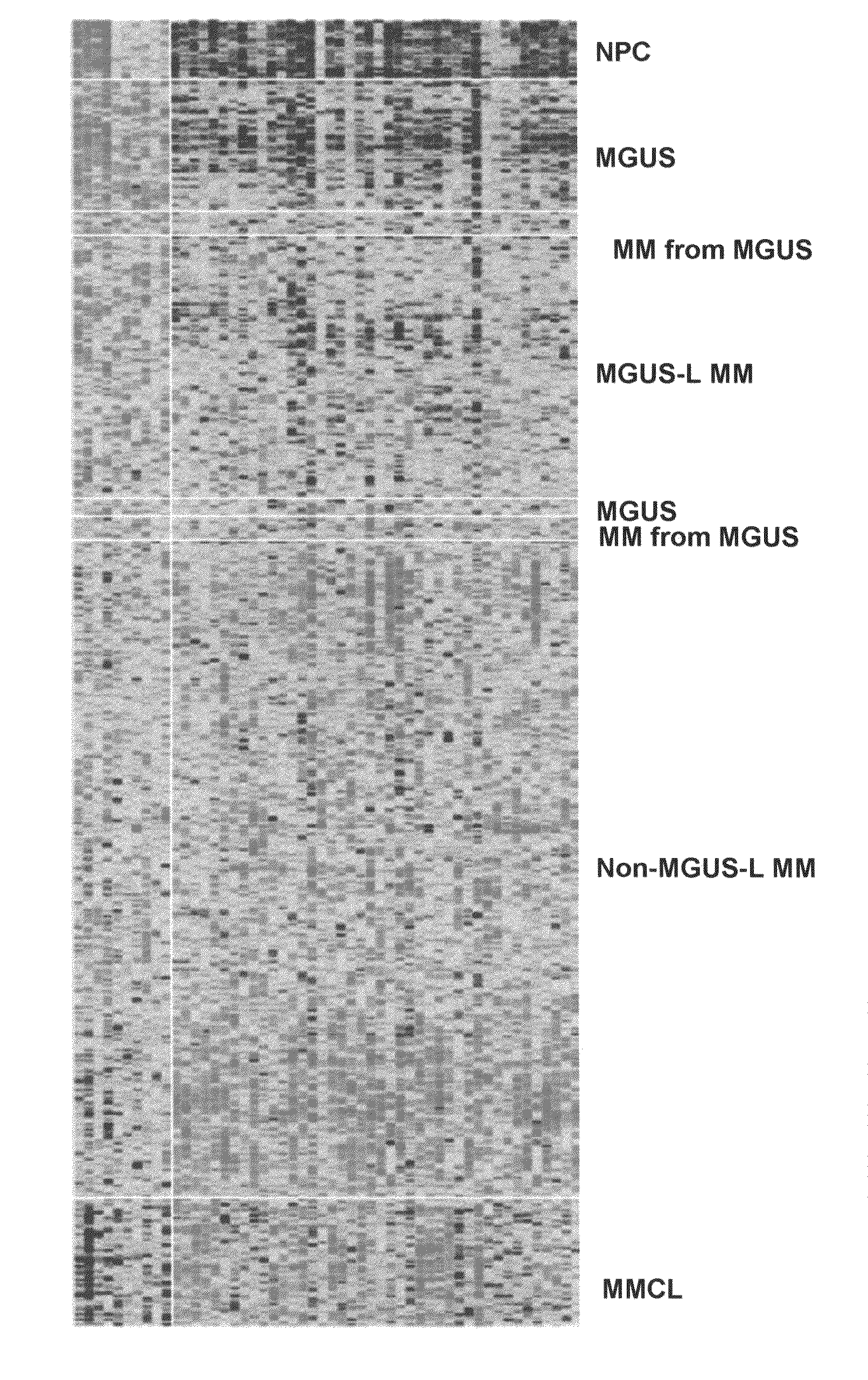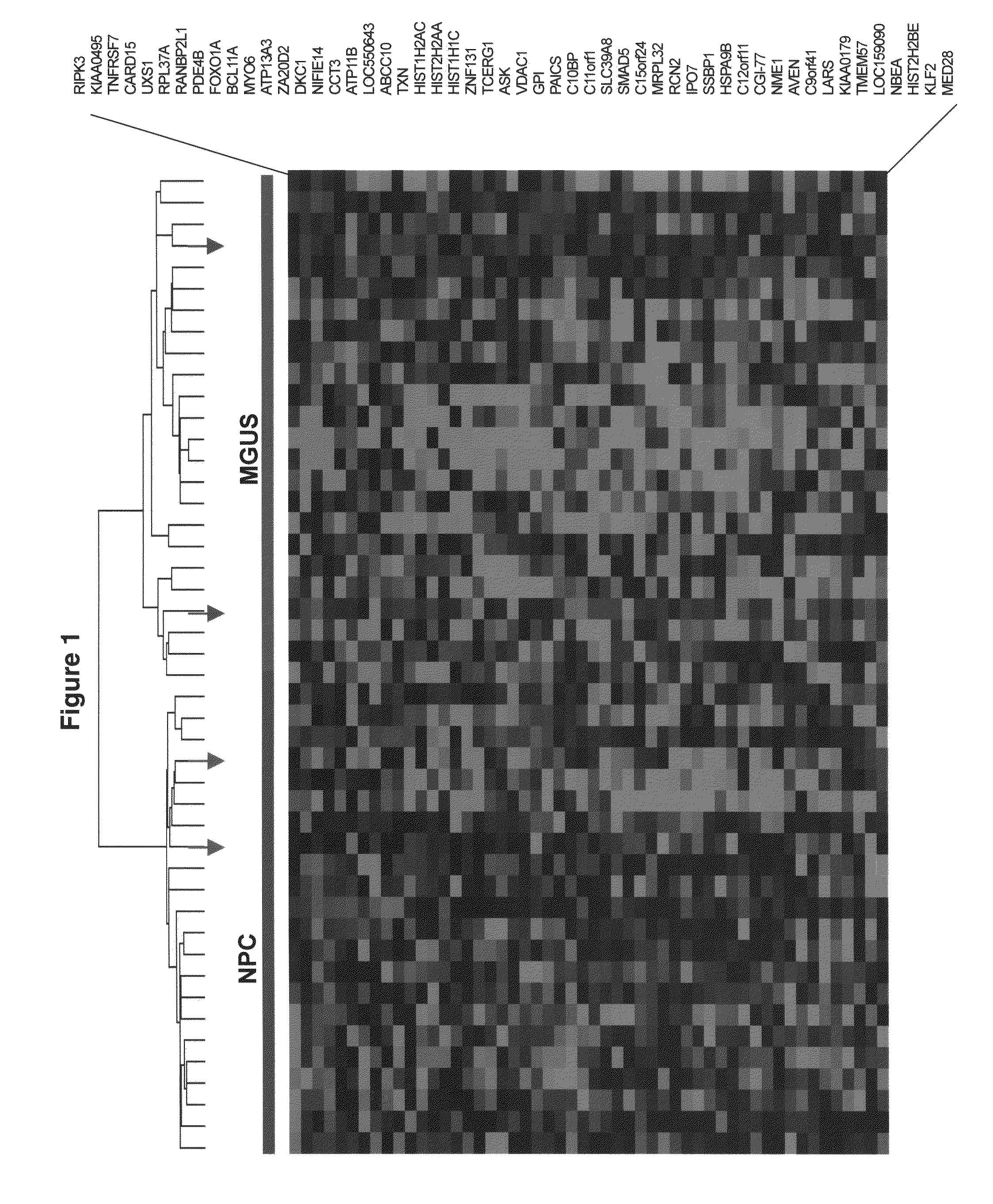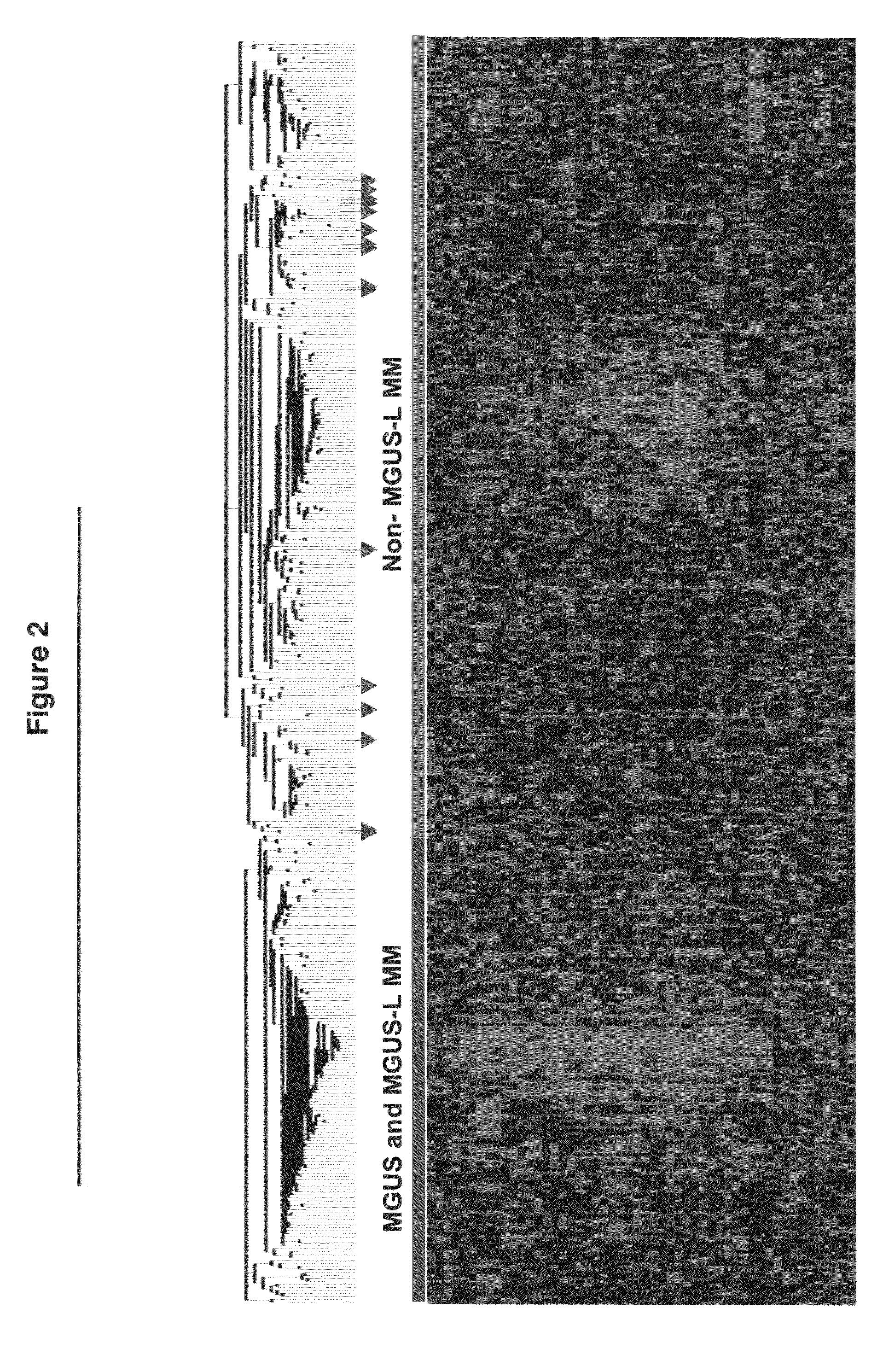Gene expression profiling based identification of genomic signatures of multiple myeloma and uses thereof
a multiple myeloma and gene expression technology, applied in combinational chemistry, biochemistry apparatus and processes, library screening, etc., can solve the problems of adverse prognosis, difficult to distinguish between plasma cells from multiple myeloma and monoclonal gammopathy of undetermined significance, and prior art deficient in methods of identifying these distinct features
- Summary
- Abstract
- Description
- Claims
- Application Information
AI Technical Summary
Benefits of technology
Problems solved by technology
Method used
Image
Examples
example 1
Study Subjects
[0036]The International Myeloma Working Group criteria were used to classify the patients as having monoclonal gammopathy of undetermined significance, smoldering multiple myeloma and symptomatic multiple myeloma. For a diagnosis of monoclonal gammopathy of undetermined significance, levels of monoclonal protein could not exceed 30 g / L and of bone marrow infiltration with plasma cells 10%; there could not be any evidence of related organ or tissue impairment defined as hypercalcemia, renal impairment, anemia or bone lesions attributed to plasma cell proliferation. In the case of smoldering multiple myeloma, related organ or tissue impairment had to be absent but levels of bone marrow plasmacytosis exceeded 10% and of monoclonal protein 30 g / L.
[0037]The analysis described utilized samples from 22 healthy donors; 72 patients with monoclonal gammopathy of undetermined significance (MGUS) (n=56) or smoldering multiple myeloma (SMM) (n=16) or multiple myeloma with a monoclo...
example 2
Sample Processing and Molecular Analyses
[0039]Plasma cell isolation, total RNA extraction, complementary RNA synthesis and hybridizations to Affymetrix U133Plus2.0 microarrays were performed as described (Zhan F, et al., 2006). Significance Analysis of Microarray (Tusher V, et al., 2001) with a false discovery rate of 0.1% was performed to identify genes uniquely expressed in monoclonal gammopathy of undetermined significance by comparing half of the monoclonal gammopathy of undetermined significance cases (n=24) with normal plasma cells cases (n=22) and 351 multiple myeloma cases. Unsupervised hierarchical (Eisen M, et al., 1998) and supervised (Golub T R, et al., 1999) cluster analysis was employed on Log2-transformed signal calls intensity values of 52 significance analysis of microarray-defined genes.
[0040]Plasma cell isolation, total RNA extraction, complementary RNA synthesis and hybridizations to Affymetrix U133Plus2.0 microarrays were performed as described previously (Zhan ...
example 3
[0043]The Kaplan-Meier Method was used to estimate overall survival, with group comparisons made using the log-rank test. Overall survival was defined from the date of registration until death from any cause; survivors were censored at the time of last contact. Univariate and multivariate analyses of prognostic factors were carried out using Cox regression. The cumulative incidence of Cox regression was estimated using the method outlined in Gooley et al., and compared using the log-rank test.
PUM
| Property | Measurement | Unit |
|---|---|---|
| frequency | aaaaa | aaaaa |
| physical | aaaaa | aaaaa |
| width | aaaaa | aaaaa |
Abstract
Description
Claims
Application Information
 Login to View More
Login to View More - R&D
- Intellectual Property
- Life Sciences
- Materials
- Tech Scout
- Unparalleled Data Quality
- Higher Quality Content
- 60% Fewer Hallucinations
Browse by: Latest US Patents, China's latest patents, Technical Efficacy Thesaurus, Application Domain, Technology Topic, Popular Technical Reports.
© 2025 PatSnap. All rights reserved.Legal|Privacy policy|Modern Slavery Act Transparency Statement|Sitemap|About US| Contact US: help@patsnap.com



